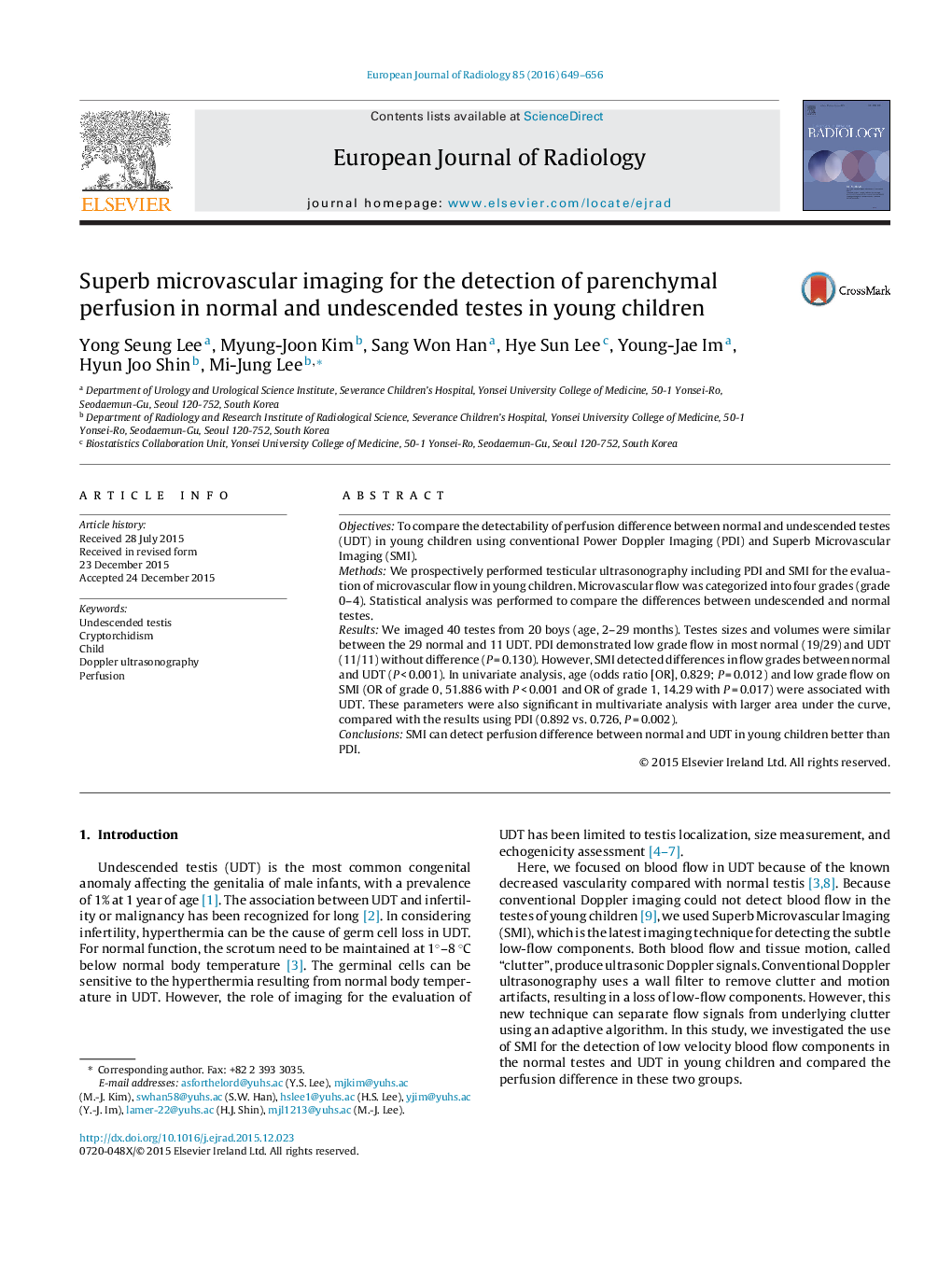| Article ID | Journal | Published Year | Pages | File Type |
|---|---|---|---|---|
| 4225056 | European Journal of Radiology | 2016 | 8 Pages |
ObjectivesTo compare the detectability of perfusion difference between normal and undescended testes (UDT) in young children using conventional Power Doppler Imaging (PDI) and Superb Microvascular Imaging (SMI).MethodsWe prospectively performed testicular ultrasonography including PDI and SMI for the evaluation of microvascular flow in young children. Microvascular flow was categorized into four grades (grade 0–4). Statistical analysis was performed to compare the differences between undescended and normal testes.ResultsWe imaged 40 testes from 20 boys (age, 2–29 months). Testes sizes and volumes were similar between the 29 normal and 11 UDT. PDI demonstrated low grade flow in most normal (19/29) and UDT (11/11) without difference (P = 0.130). However, SMI detected differences in flow grades between normal and UDT (P < 0.001). In univariate analysis, age (odds ratio [OR], 0.829; P = 0.012) and low grade flow on SMI (OR of grade 0, 51.886 with P < 0.001 and OR of grade 1, 14.29 with P = 0.017) were associated with UDT. These parameters were also significant in multivariate analysis with larger area under the curve, compared with the results using PDI (0.892 vs. 0.726, P = 0.002).ConclusionsSMI can detect perfusion difference between normal and UDT in young children better than PDI.
